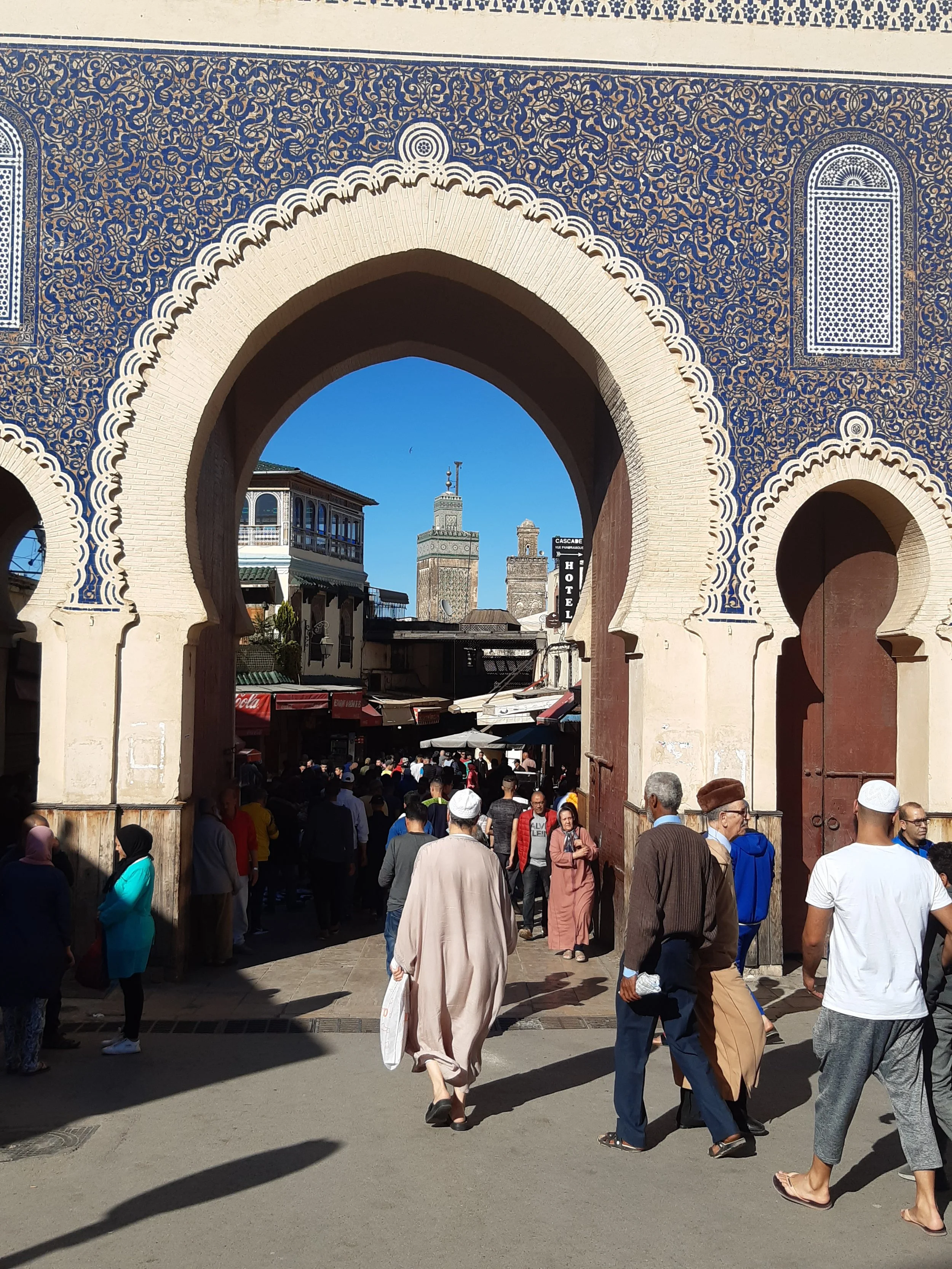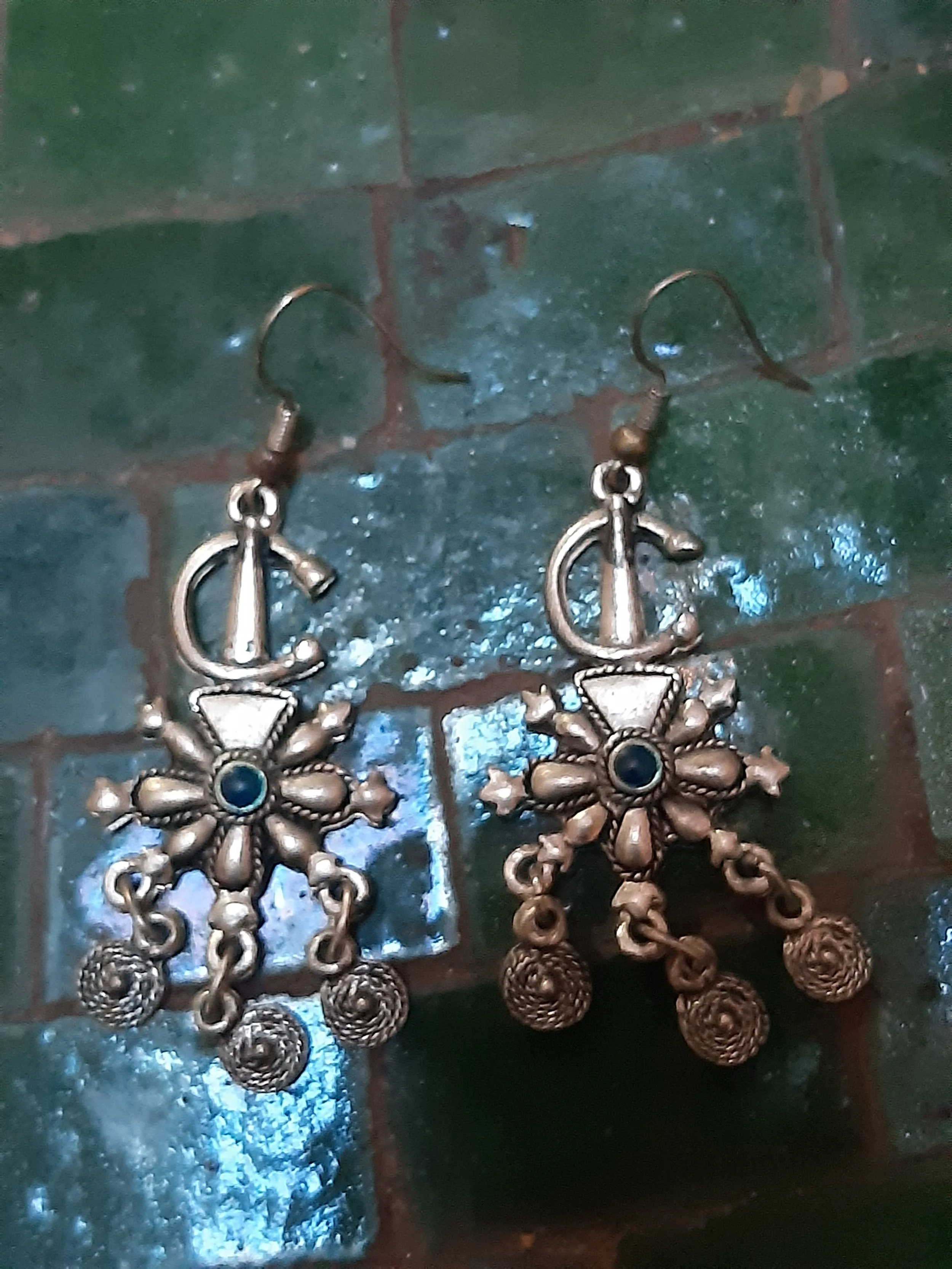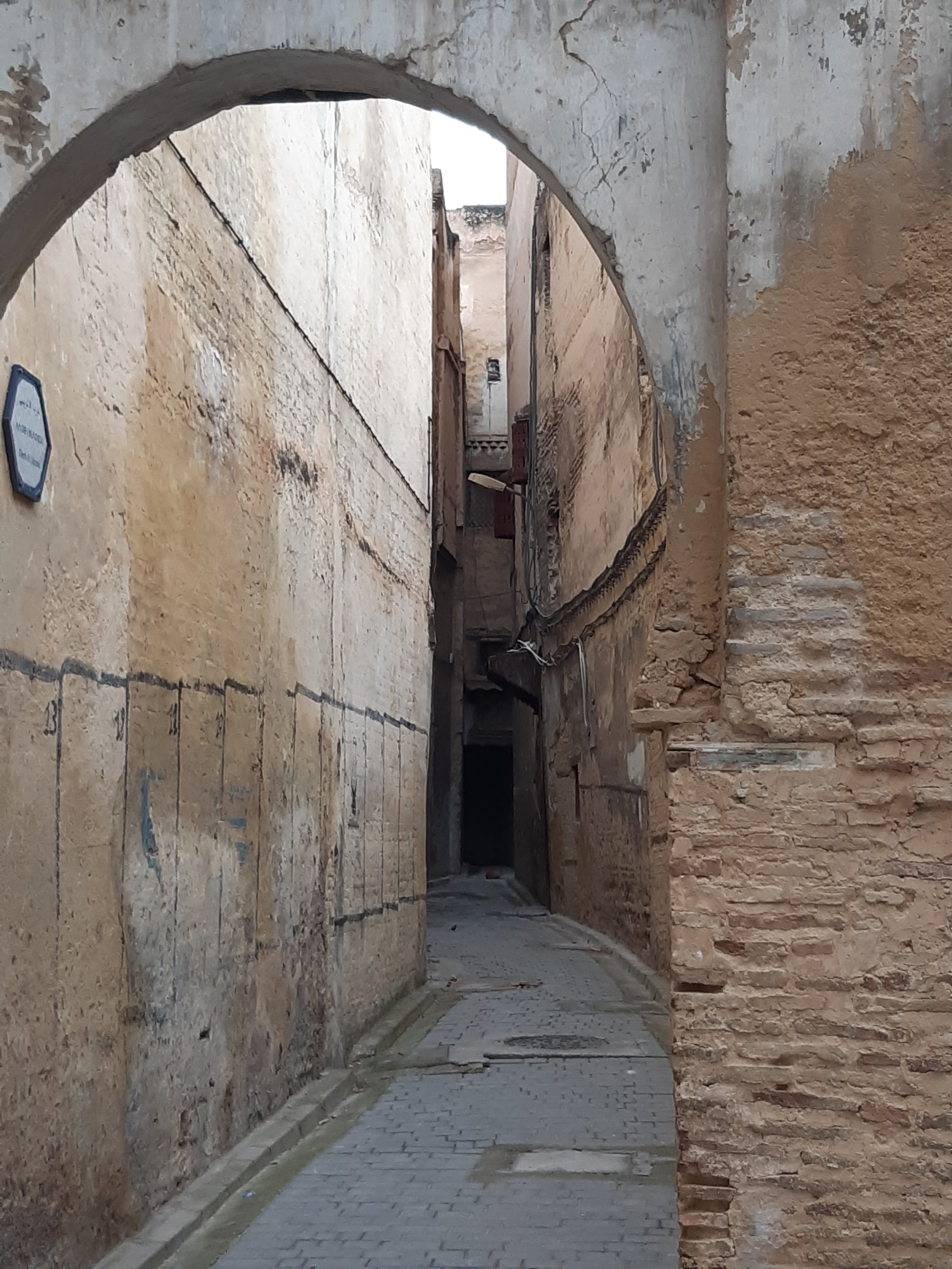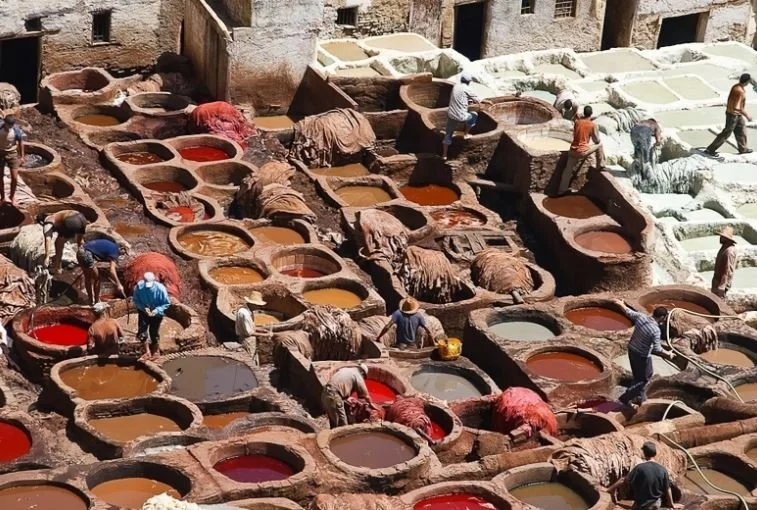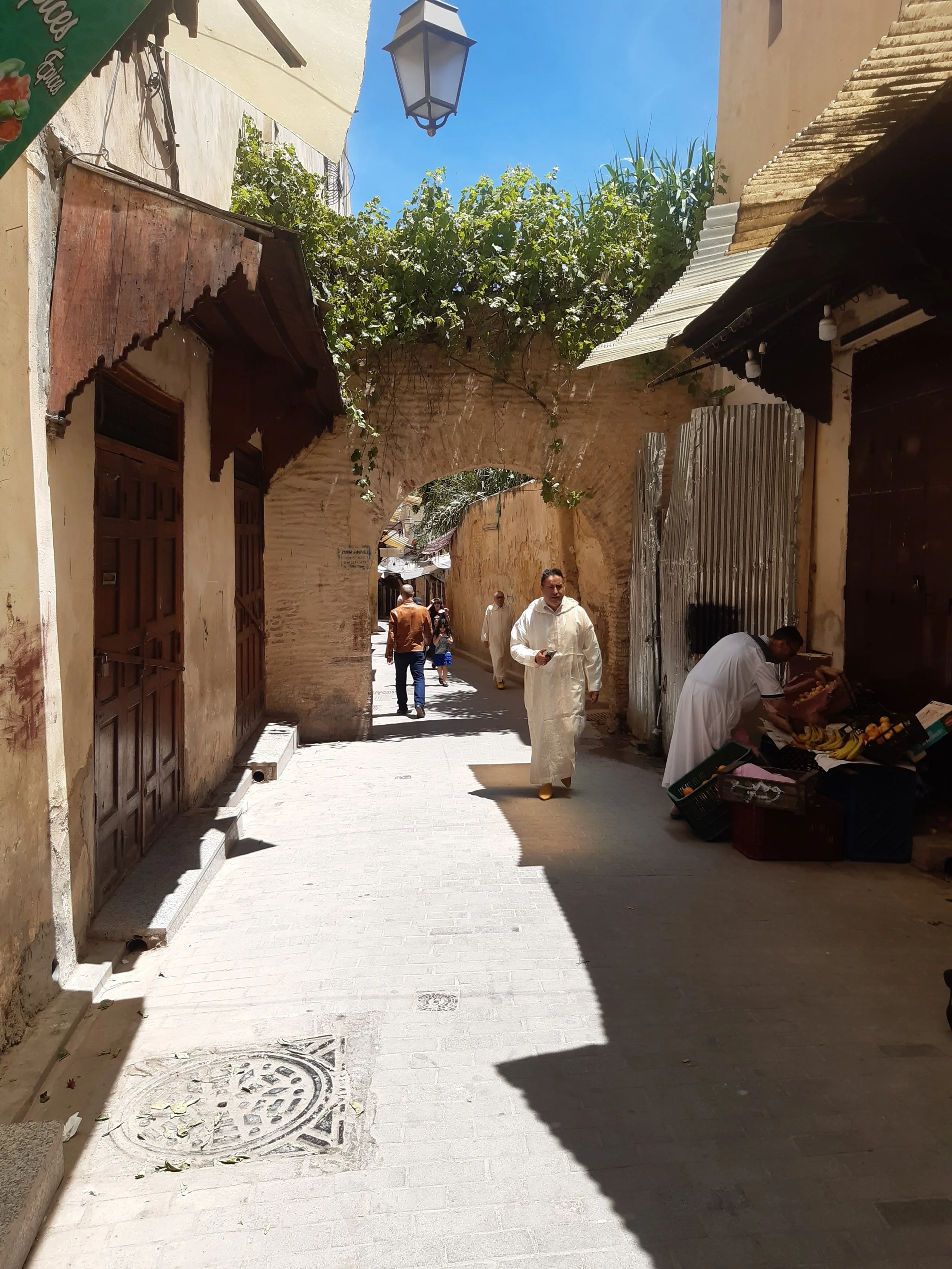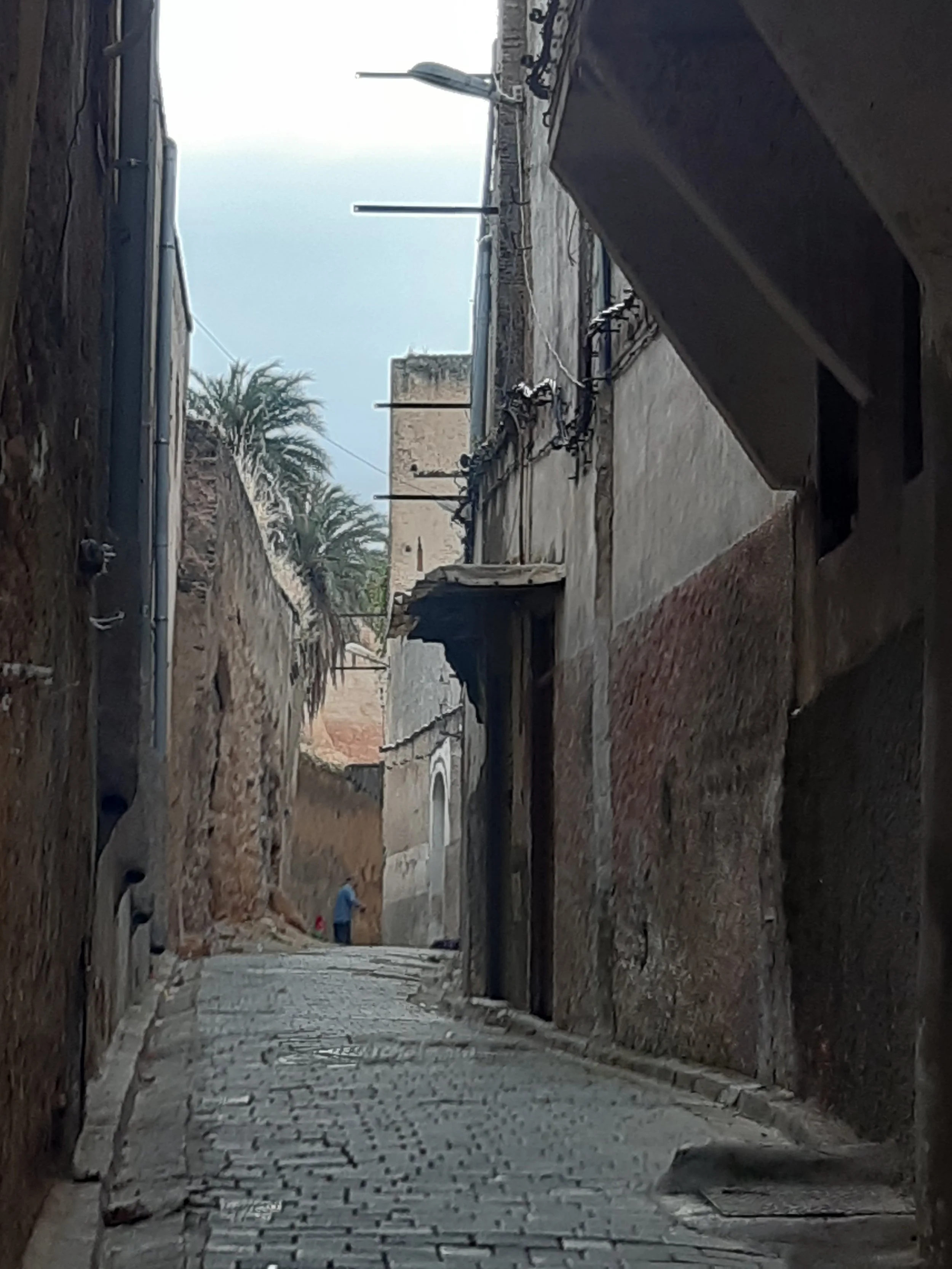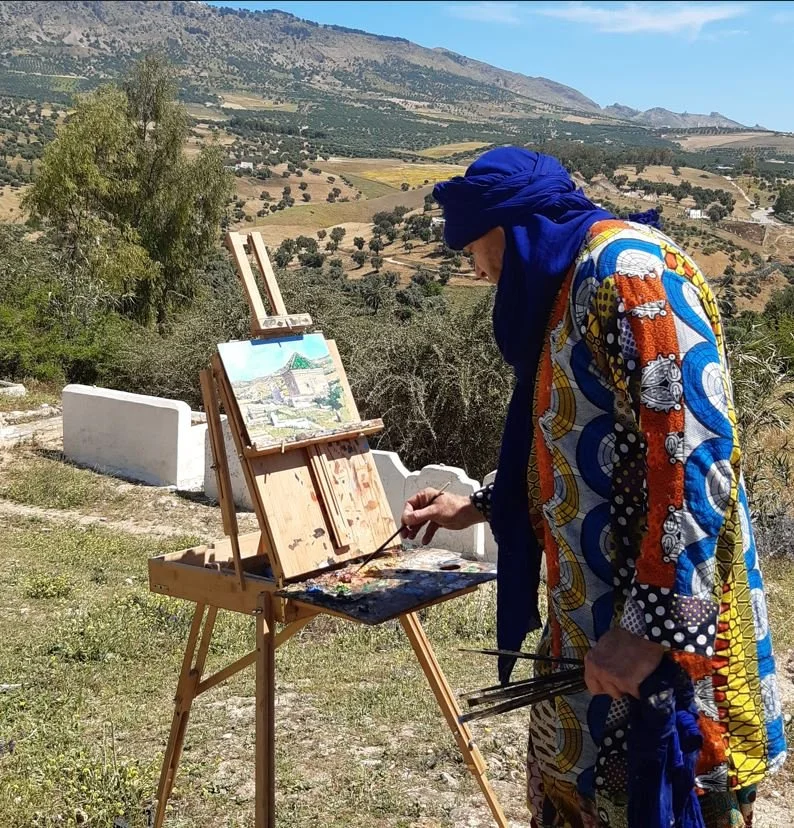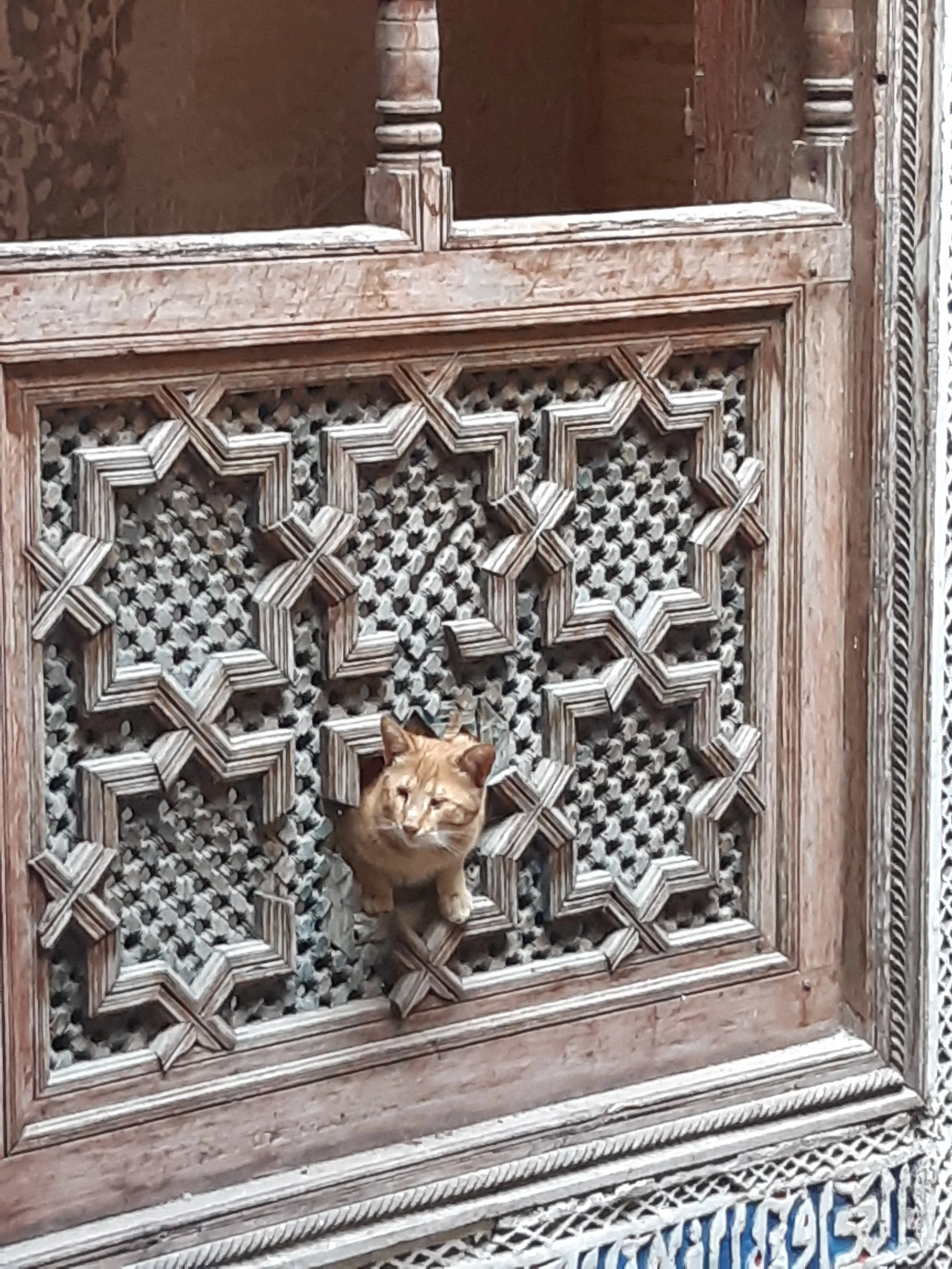Fes, and ‘Basil Fawlty’s’ Place
Fes, an old capital, and full of surprises
(And a Moroccan version of Basil Fawlty, right out of that classic 1970s Monty Python series, Fawlty Towers)
My friend and I settled at a table – one of the many mini restaurants inside the Fes old city medina, on a corner and almost nose to nose with people walking past. Not glamorous, but the best food places rarely are. And ordered from Hassan, dressed in the typical style with the big baggy Moroccan pants and the low gusset, nearer his knees than his groin – who knew the current baggy pants style was predated by centuries in this corner of Africa.
The smells of cooking filled the air – of meat and spices, especially cumin.
A few minutes later, Hassan came back to our table, glancing to his right, then his left. Secretive. He checked the passersby, first along one alleyway, then another. Slowly he moved his hand down into the front of his pants. I glanced at my friend, but he wasn’t looking my way.
The waiter-owner’s hand inched deeper inside his pants and proceeded to grope around. He worked it under his belt. An old man walked past. Suddenly Hassan stopped. He backed away into the corner and turned away from the street to hide what he was doing. More furtive glances right and left. His hand made it all the way down, his arm now fully hidden up to his elbow.
Then, in one swift movement, he swung back around to us, pulled his hand out from inside his pants, and in the same movement below the table level. In his hand he had a “bottle of coca cola”, shielding it between the table cloth and his body. He transferred the bottle to my friends waiting hand and left.
Without batting an eyelid, my friend took a glass from the table and turned his back to the street. Still below table height and out of sight, he quickly poured the ‘coke’ into his glass, then mine, and set the bottle on the floor out of sight.
My friend raised his glass to me with a grin. ‘Welcome to Fes.’
Red wine.
Not because it is forbidden. There are plenty of ways to get alcohol in Morocco, even in the more conservative Fes. But because it requires an expensive license, and it is only legal to sell alcohol for non-Muslims. In a country that is officially 99% Muslim, this can cause a conflict for enterprising restaurant owners. It’s not that Moroccans don’t drink – Many do. But furtively. Because it is haram, or ‘forbidden’.
Not that that stops people. Like many things that are haram, it is just something done out of sight. After all, during Ramadan they abstain – at least through daylight hours – and all is forgiven, much like the confessional in a Catholic church.
Night bars in Morocco are full – not of foreigners – but of locals. They even have their own wine and beer industries. Three Moroccan beers – Stork (my choice, for flavour), Speciale (a lot like Heineken), and Casablanca (a shade more pricey), and several wineries – CP and Terroir are two common brands.
At this café-restaurant, it has become a kind of ritual. Red wine is available, served up in the disguise of a coke bottle. Everybody knows, but as long as nobody really sees, the blind eye is turned, and life goes on.
This was not Basil’s place as such, as in Basil Fawlty of Fawlty Towers. ‘Basil’ is just around the corner, perpetually grumpy, but still good food and did the business, including the coke bottle of red wine. But sometimes in an unfamiliar territory everywhere can feel like Basil’s place.
For me Fes is the place of earrings. I have a bad habit of losing them, and it is full of 20dhs (€2) options which I like. Somehow, purely by accident – I swear – I always forgot to pack my earrings when I visited my friend in Fes. What can a girl do but buy more!
Fes is an endless maze of medina alleyways. It extends far enough as a tourist just wandering around the souvenir shops – especially for earrings – but the Fes medina is the biggest medina in the world. Medina just means city centre, but in conversation it is usually used to specifically refer to the old walled city, and is a typical feature of cities on both sides of the Mediterranean, and in the Middle East.
Take the time to wander out of the touristy area and find where the medina Fesians live. They actually don’t know exactly how many people live in the old medina. Many have not been recorded. The estimate is over 1 million people. This is totally aside from the new city.
Fes has been both a political and cultural capital on and off over the centuries, usually vying for this title with Marrakech. When the French took over Morocco in 1912 the capital was moved from Fes to Rabat. It is the home of a lot of Moroccan culture and prides itself today as a cultural capital, including a mosque built in 859, and claims the title of oldest continually functioning university in the world – the University of al-Qarawiyyin established in 859.
Note here the details. I am constantly frustrated by the misinformation on the net, so I will set the record straight on something often misquoted. Al-Qarawiyyin in Fes is the oldest continuously running university, and it was not founded by a woman. As nice as it is to think that the first university was started by a woman, Fatima al-Fihri who is currently being claimed to have founded it was a citizen of Fes who made significant contributions to the university - which was already functioning.
Many sites define a proper university as having to have that name, claiming that the University of Bologna was therefore the first, though it wasn’t established til 1088. Frankly, that is just euro-centric convenience of definitions. Al-Qarawiyyin pre-dates it by over 2 centuries, which is a very long time - maybe 8 generations.
Statue of Xuanzang, Nalanda, India, a Chinese traveller also important for a record of history like Herodotus, Marco Polo and Ibn Battouta.
Even before Al-Qarawiyyin, the first university was actually Nalanda University in the northeast of India near Nepal. It was founded in 427 AD, four and a half centuries before Al-Qarawiyyin. The Chinese monk Xuanzang studied there for two years between 637-642 AD when subjects included Sanskrit and medicine. He was another of the early travellers like Marco Polo (c. 1300) who travelled from China in his famous journey to the west, to retrieve Buddhist texts and save Buddhism in China. (I mention him since he is a character in my novel ‘The Shadow of the Monkey‘, which I’m still editing.)
The significant difference between these two universities is that Al-Qarawiyyin is the oldest continuously running university. Nalanda is currently reviving, but it ceased functioning somewhere around the 13th century.
Also in Fes’s list of oldest, it also has some of the oldest tanneries in the world. Leather goods are a big business in Fes.
I actually saw one on TV years ago when watching “Race Around the World”, and have ever since been fascinated by them. Morocco is so far from Australia that I didn’t even register where the tannery was located at the time. Rather than the biggest and oldest tannery – Chouara – my friend took me to Sidi Moussa which is less commercialized, and perhaps more authentic. (The third in Fes is Ain Azliten.)
These tanneries have been functioning in the same way since the 11th century. If you can handle the smell, and like to chase history like me, it is well worth a visit. It is an echo of Tony Robinson’s “Worst Jobs in History” (Of Time Team fame) – English based, but a fascinating look into the way things used to be done that we no longer hear about.
The tanneries remind me of a wasp’s nest cut in half – the myriad of tubs which seem to be constructed in the same pattern. The tannery tubs are rather more durable, using brick and mortar over mud and wasp saliva. But that’s where the similarities stop. They are all laid out next to each other, filled with water of various colours in the preparation and dying phases.
The fresh hides are heavily salted, soaked and scraped to clean the hair off, followed by a series of processes and concoctions including lime, pigeon droppings, bran and tannin. Finally, they are coloured, ready to be made into the bags and other products you buy at the shops next door.
Fes is a place of colour on all fronts. I’ve visited there many times, just 3 ¼ hours by train from Tangier, including the beautiful el Boraq train which runs between Tangier and Casablanca. In Kenitra, just an hour out of Tangier, the change usually means just crossing the platform and waiting just 10 minutes.
There the world changes, from one of the most modern and nice trains in the world, to something out of history. In most rich countries it is such a long time since trains came as compartments for 8 with individual doors along the side corridor.
And then of course there is the haggling over seats – even though they are allocated on the ticket. That may in part be because I realized many Moroccans can’t read. And it is this way that I leave Tangier, modern with fresh sea breezes keeping the temperatures mild, a wealthy Moroccan city on the doorstep of Europe and the gateway to the Mediterranean, to Fes – an ancient city which hits the high 40s centigrade throughout summer (38C is where the thermometer goes above 100F), priding itself in culture, but also a step back in Moroccan time, to a medina with no motorized vehicles.
Yes, motorized vehicles are not permitted in the medina. Garbage is collected by donkey, and goods are moved around by a wheeled trailer that is usually pulled by manpower. It is not only the largest medina in the world, but it is also the largest urban area which is pedestrian only.
There are of course riads in Tangier. My friend’s house is a riad inside the Fes medina. A riad is a house around a courtyard – I had thought in the style of the ancient Romans, but it is a design from the Persians before them. It is uniquely suited to the hot climates around the Sahara and Middle East.
Houses are set around a courtyard, and rate as a riad as long as they have a plant and a water feature. My friend’s house was perhaps the smallest this is possible. He had a wall fountain and a potplant. In the typically confined spaces of the medina inner city streets, his house was 3 floors high, with literally enough space around the courtyard for 1 room and the stairs, a balcony here and there.
But significantly the rooftop is open.
This is a remarkably efficient design. The high ceilings and the open rooftop lets out the heat. We both shake our heads at the foreigners flooding in and renovating, who relate everything to their cold home climates, and promptly cover this over. But I have been in Fes in the summer, and in the house in the summer heat, it was warm, but it wasn’t hot.
The narrow medina streets are designed not just to confuse an enemy, but also to keep out the sun. the streets are cooler. The houses stay cooler. And the high ceilings and open courtyard roofing also keeps things cool. A/C is mostly not necessary.
My friend bought his riad with huge holes in the floors, and very run down. It was the imam’s house – head of the mosque – and attached to the huge mansion riad next door which is now a hotel. Slowly he has been doing it up. When I first went there it was already in an impressive state.
We walk through the early morning alleyways to the square just outside the main entrance gate to the old city. This is his favourite breakfast café. Because what is Morocco without its cafés!
Café Firdaus Bah’ta – with our omelettes, mint tea, and café latte. Morocco’s coffee is good – and the cheaper the café – for just €1, generally the better it is.
We chat over the eye-candy walking past and others that catch our attention. A lady is one, respectably dressed and looking fresh, and very deep in an argument with her sister-in-law. She is a regular feature of Fes, always arguing loudly. She stops at times at a café for a drink. For this she is respectfully quiet.
When she’s finished, she pays and leaves, again to resume her animated argument with her sister-in-law – who died several years ago.
There is a very different attitude to crazy people in Morocco. Anyone afflicted is considered blessed, and generally is accepted moving around in public. Like this lady, most are clearly looked after by someone, bathed dressed and fed. Then they are left to wander the streets through the day as they may, taken care of by everyone as a part of the bigger family community.
This is both a good thing, but the flipside is no facilities for people in need, and almost a complete lack of regard for any psychological treatment, thought of as unnecessary and not even valid.
After some morning chores, before heading out to my friend’s latest site to finish a painting, we stop in a café for a drink. My friend Noel has lived in Morocco now for going on 12 years, starting in Marrakech until he fell in love with Fes and found his riad. He has very decent Darija (Moroccan Arabic), and gets asked for many oddities.
He even featured in an historical docudrama from the 14th century, where he played a respectable trader who was double crossed, playing out a death scene by sword. I was invited to be one of the background dancers around the fountain!
On this occasion at the café, one of his friends asked him for an audition. A new Indiana Jones movie was coming to town. The movie was set in Tangier, but it was filmed entirely in Fes.
As we finished our mint tea another character arrived at the doorway. Completely British, and 90-something years old.
With a sprightly step he strutted up to the café doorway and stopped. He put his weight very slightly onto his cane and tapped the floor. He grinned, making his white handlebar moustache quiver, the twinkle in his eyes spreading to the wrinkles in his face.
He waited, giving a perfectly dramatic pause until he had everyone’s attention. He whipped off his fedora hat, and in a loud and zesty voice he announced himself.
‘So when is the last time you had a good fuck?’
With this he almost danced across the space behind his cane to join his friends in the corner on the far side of the café. I am told that this was his normal greeting.
With that, as was our usual, Noel and I decided it was high time for a beer. We headed further into the medina to a café called El Khemissa, renowned especially for its gnaoua or aissaoua music – the local Berber music that is truly the heart of Morocco.
And another feature of this café – somehow, no doubt in the way that many things are arranged in Morocco – the owners had permission to sell alcohol. It is a place which has regular live music playing. We sat on the rooftop enjoying another Moroccan sunset, views over the Fes rooftops, beer, tapas, and gnaoua music.
